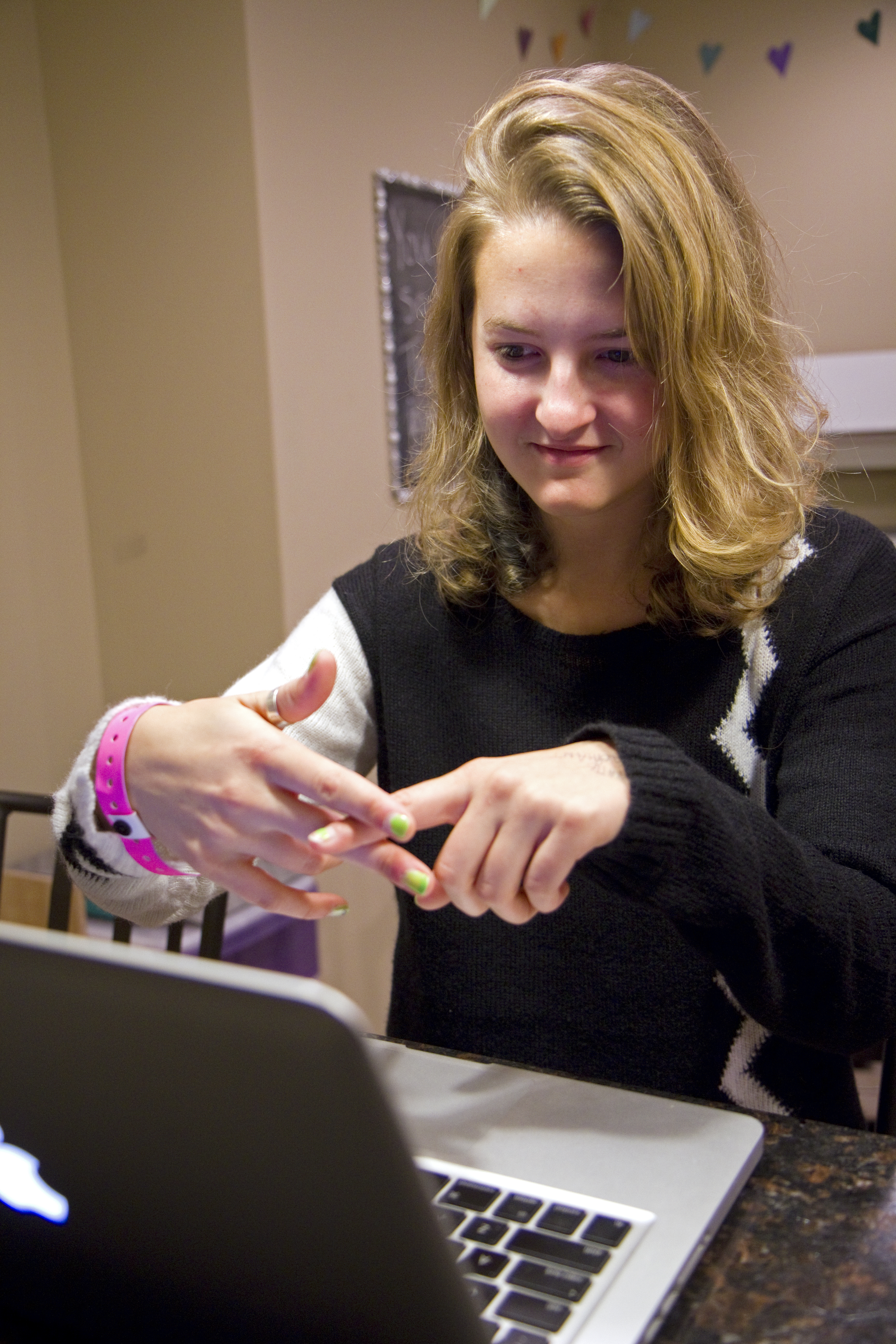Stephanie Gilbert taught herself sign language through online videos.
Gilbert, a fourth-year psychobiology student, wanted to learn how to sign so she could better communicate with the elderly and the deaf community. Her schools, however, did not offer a formal class, which forced her to learn on her own.
Although she enjoyed the experience, Gilbert said learning the language from a person would be much easier than learning through a screen, which became difficult at times.
For those like Gilbert, the opportunity for in-person instruction will soon be a reality at UCLA.
After a campaign of more than a year, UCLA students who want to learn to sign will have the opportunity to take American Sign Language courses for college credit as early as this summer or fall, said Kyle McJunkin, director of curriculum coordination.
UCLA students who have already studied American Sign Language will also be able to pass out of the foreign language requirement beginning this month. If a student learned sign language in high school or at home, they should contact his or her counselor to schedule a test, McJunkin said.
The process began last year when former Daily Bruin Opinion columnist Asad Ramzanali wrote an article urging the university to offer sign language.
The university currently offers courses in 50 different languages, some of which are now rarely heard.
“If we’re teaching some of these languages and some are not even spoken anymore, American Sign Language seems like it belongs on that list,” Ramzanali said.
His column caught the attention of linguistics Professor Tim Stowell, who was dean of humanities at the time.
Stowell asked Ramzanali to provide a list of students interested in a sign language class, so Ramzanali sent out an online survey through Facebook and collected 40 email signatures of students who would consider enrolling. He also did research relevant to the subject to provide to Stowell.
Ramzanali learned through the Modern Language Association that, as of 2009, American Sign Language, along with Spanish and Korean, was one of the only languages with increasing undergraduate enrollment that sees parallel growth at the graduate level.
Spurred in part by Ramzanali’s efforts, the department of linguistics is currently searching for an instructor to teach a signing course, McJunkin said.
It is possible the department will offer an intensive American Sign Language course this summer to give students the opportunity to pass out of the foreign language requirement all in one class, he said. Like any other language, passing the third course with a “C” will fulfill the requirement, he said.
Before deciding to fund a course, McJunkin and colleagues visited UC San Diego, where American Sign Language is one of the top three most popular first-level languages, to gain some perspective on what to expect before offering the language courses.
At UCSD, the introductory signing classes have a couple hundred students on the waitlist each year. Evidence of the language’s popularity at UCSD is a promising sign, but McJunkin said the real test will be whether students will sign up at UCLA once classes are offered.
After transferring from community college, third-year linguistics and psychology student Shivani Bhakta thought she would not be able to continue her sign language education at UCLA.
When she learned that her arrival at UCLA coincided with the implementation of a new American Sign Language curriculum, Bhakta said she was excited to have the opportunity to advance her signing.
Currently, the student club Humans Establishing Awareness Regarding Deafness, or HEARD, is the only organization on campus which teaches sign language. The club was formed last spring in an effort to provide a place where students could practice sign language together.
Because most of the student members did not know how to sign, however, it turned into a place where students actually learned how to sign from their peers. The club received over 200 interested signatures at the fall activities fair and has sustained 20 or more members at its Thursday meetings in Kerckhoff Hall since the beginning of the school year.
Moses Sumney, a fourth-year English student and current copy editor at the Daily Bruin, founded the club. Sumney said he became interested in American Sign Language in high school.
He wanted to be able to communicate with a deaf girl in his class who was often alone because nobody else knew how to sign, he said.
Along with a few other students in HEARD, he teaches interested members how to sign.
“The actual deaf community (at UCLA) is a lot smaller than I assumed or expected it to be. But the interest is greater,” Sumney said.
The club thinks offering American Sign Language at UCLA is an important step to bridging the gap between the hearing and deaf community in Los Angeles, Sumney said.
After two years, the success of the UCLA program will be evaluated and a decision to fund it permanently will be made, McJunkin said.
